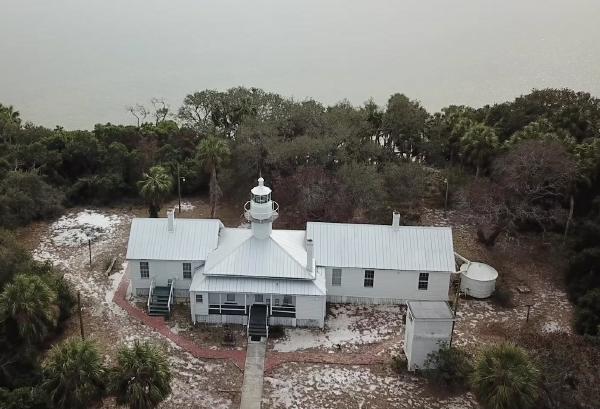Seahorse Key, located about 3 miles offshore of the present town of Cedar Key,
is part of the Cedar Keys National Wildlife Refuge. The 165 acre island is a
former dune with the highest elevation on the west coast of Florida. Atop the 52
foot tall ridge forming the spine of the key is the historic Cedar Key Light ...
first envisioned by General Zachary Taylor, commissioned in 1850, and placed in
service in 1854.

In the period after the 2nd Seminole War, Cedar Key was the largest port on the
west coast of Florida. A supply depot and hospital were established on nearby
Atsena Otie Key, and Seahorse Key was used as a detention camp for Indians being
relocate to the west. Construction of the lighthouse, along with a railroad in
1860, allowed Cedar Key to attract major industries to the area. After many
years, ports in Tampa and further south caused a decline in shipping from Cedar
Key ... and the light was decommissioned in 1915.
Since 1951 a portion of the island, including the lighthouse, has been leased to
the University of Florida for a marine laboratory. The island is home to 246
bird species, and is a protected nesting area from March 1st until June 30th of
each year. During that time, no visitors are allowed on the island, and boats
must stay at least 300 feet offshore.
The lighthouse is closed to the public, and is used only as quarters for
researchers affiliated with the marine laboratory. Open houses are held about
four times per year that allow visitors to come to the island and tour the
lighthouse. Check the links listed below for current open house dates. During
the open houses, tour companies offer excursions to the island, or visitors may
come in a private boat or kayak. In
addition to the historic lighthouse and marine laboratory, there is also an
historic cemetery on the island.
Activities & Facilities
Short hiking trails

Open gulf kayaking

Motor boating